Ever get the feeling that some tech firms have run out of anything new to say? So does fellow Enterprise Irregular Brian Sommer, so he offers a template for such companies:
XYZ Announces Nothing New
Nothing New to Become the New Industry Standard
January 9, 2008 – Chicago – Today, XYZ Corporation is announcing ‘Nothing New’ a revolutionary, industry-leading approach to stall-ware, procrastination and marketing waste. “We believe this is the most important announcement we’ve made this year – maybe this decade”, says Jim Bigwind, CMO of XYZ.
…
“This announcement is nothing short of extraordinary. It is, in fact, nothing” says XYZ customer Getz Fleeced Oftin at SoftTouch Ltd.
…
Blithering Media represents way too many tech firms and amazingly enough has no one on staff that understands the space. Blithering Media personnel are expert though at crafting press releases on just about anything (or nothing as in this case). For more info on Blithering Media contact us point.less@ blitheringmedia.com
I’m not giving away the full announcement – click over to Software Safari and enjoy. 
Update (1/11): Wow, Brian is on fire: his next piece, Acronym Shortage to Adversely Impact Tech Sector is a must-read. 

 . Too bad it got juxtaposed with the much less cheerful story of a customer being
. Too bad it got juxtaposed with the much less cheerful story of a customer being 

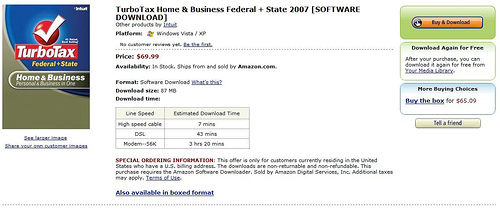
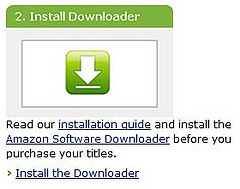 There’s one thing I really, really don’t like about this new Amazon service: before you can purchase anything, you need to download and install the “Amazon Downloader”, which in turn will download and install the actual product. Now, I don’t know about you, but I certainly am not buying software frequently enough to justify the need for a client, whatever benefits(?) this approach may offer. And of course once you install software, you know you’re in for a lifetime of endless updates…
There’s one thing I really, really don’t like about this new Amazon service: before you can purchase anything, you need to download and install the “Amazon Downloader”, which in turn will download and install the actual product. Now, I don’t know about you, but I certainly am not buying software frequently enough to justify the need for a client, whatever benefits(?) this approach may offer. And of course once you install software, you know you’re in for a lifetime of endless updates…
 :
: Who has time for this? Between the applications we actually use and all the crapware needed just to keep our computers running (virus scan, firewall, anti-spy, desktop search, backup, synchronization …etc), it’s just getting way too much to deal with.
Who has time for this? Between the applications we actually use and all the crapware needed just to keep our computers running (virus scan, firewall, anti-spy, desktop search, backup, synchronization …etc), it’s just getting way too much to deal with.
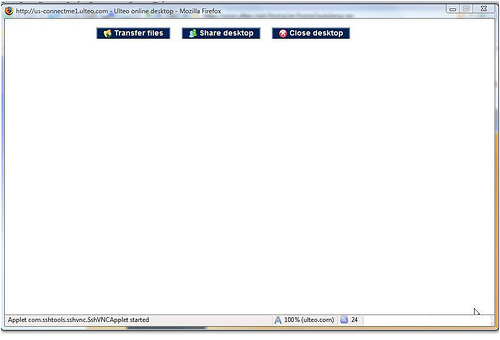
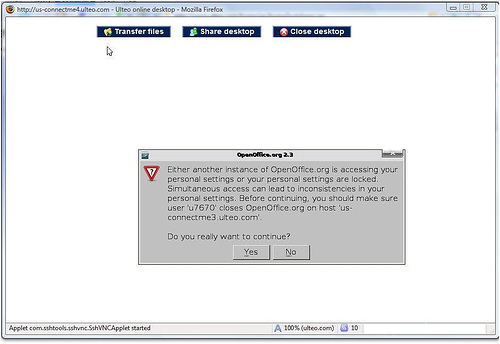
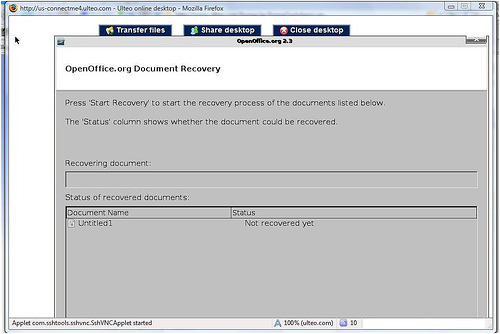
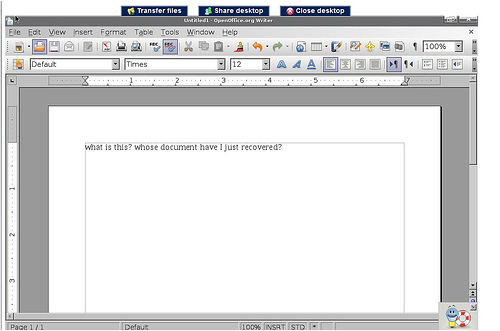

 If there’s one application where the benefits of collaborative creation, sharing, easy access from anywhere speak for themselves, that’s presentations. After all, we rarely create presentations to ourselves: it’s a one-to-many, or more typically few-to-many situation. But dealing with version
If there’s one application where the benefits of collaborative creation, sharing, easy access from anywhere speak for themselves, that’s presentations. After all, we rarely create presentations to ourselves: it’s a one-to-many, or more typically few-to-many situation. But dealing with version 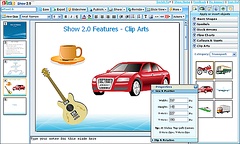 number 115 of the Sales Presentation, just figuring out which one is current, let alone contributing to it while someone else might be working on a different version is a nightmare – and when you’re ready to present, you’re still prone to
number 115 of the Sales Presentation, just figuring out which one is current, let alone contributing to it while someone else might be working on a different version is a nightmare – and when you’re ready to present, you’re still prone to 
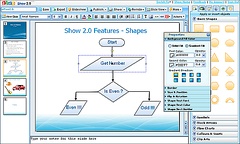 Zoho’s import facility is now significantly improved. I’ve tested it by importing several PPT decks that had suffered some deterioration in Show 1.0 – they come out perfectly in 2.0.
Zoho’s import facility is now significantly improved. I’ve tested it by importing several PPT decks that had suffered some deterioration in Show 1.0 – they come out perfectly in 2.0.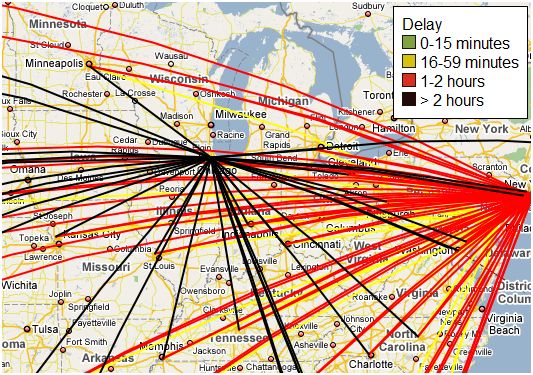
 As much as I am a
As much as I am a 
Recent Comments